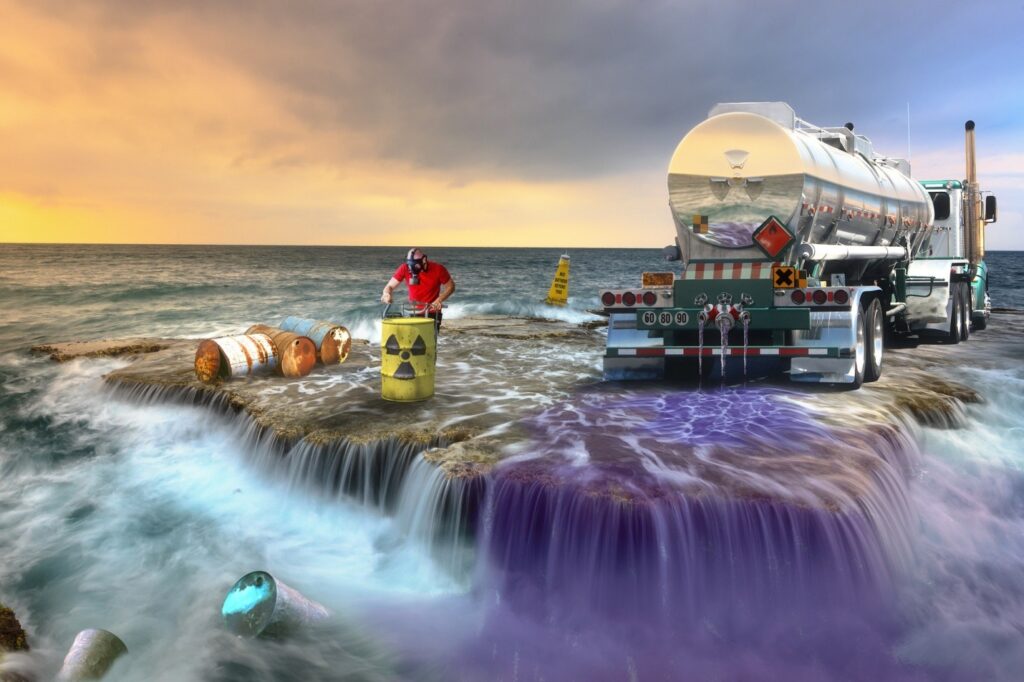4 Simple Techniques For Reclaim Waste
Wiki Article
An Unbiased View of Reclaim Waste
Table of ContentsReclaim Waste Things To Know Before You BuyThe Best Guide To Reclaim WasteThe Main Principles Of Reclaim Waste The Buzz on Reclaim WasteThe Ultimate Guide To Reclaim Waste
Discover the types, occurrences, and kinds of liquid waste. Residential sewage waste describes the waste and products from a domestic septic tank. This sort of waste is produced by human beings in homes, institutions, and other structures. This only includes septic containers that have a drain area. The appropriate management and disposal of residential sewage waste need liquid waste to be moved to a sewage therapy plant where the proper approaches and equipment are used to purify and take care of waste.
Business waste typically consists of potential risks, such as combustible products or a mixture of liquid and strong waste items, and requires an advanced and comprehensive disposal procedure. The disposal of business waste commonly involves the filtration of waste before transport to make certain safe and appropriate disposal. Hazardous waste is developed from results and runoff of industrial processes and production.
This type of waste can not make use of the same sewage management transportation or processes as septic or industrial liquids. The commercial waste administration procedure needs the evaluation and screening of fluid waste prior to it undertakes the disposal process (liquid waste removal melbourne). Drainage waste is the liquid waste that comes from drainage and excess stormwater in highly populated locations or cities
Overflow waste can trigger contamination and flooding if not dealt with correctly. Making sure correct waste administration can avoid disasters and decrease environmental injury.
Things about Reclaim Waste
Contact PROS Services today to find out concerning our waste administration and disposal solutions and the appropriate ways to look after the liquid waste you generate.(https://slides.com/reclaimwaste1)Do you understand what happens to your water when you pull the plug, purge the commode or drain the washing equipment? No? Well, it deserves understanding. This supposed 'wastewater' is not only a vital source but, after therapy, will be launched to our land, waterways or the sea. Used water from commodes, showers, baths, cooking area sinks, laundries and commercial processes is understood as wastewater.

water used to cool equipment or clean plant and devices). Stormwater, a kind of wastewater, is overflow that moves from agricultural and metropolitan locations such as roofings, parks, yards, roadways, paths and rain gutters right into stormwater drains, after rain. Stormwater moves neglected straight to neighborhood creeks or rivers, eventually getting to the sea.
10 Simple Techniques For Reclaim Waste
In Queensland, most wastewater is treated at sewage treatment plants. Wastewater is moved from residential or commercial websites with a system of drains and pump stations, known as sewerage reticulation, to a sewage therapy plant.The Division of Natural Resources encourages neighborhood federal governments regarding handling, operating and preserving sewage systems and treatment plants. In unsewered areas, regional federal governments might call for owners to install specific or household sewer treatment systems to deal with residential wastewater from commodes, cooking areas, shower rooms and laundries. The Department of Natural Resources authorizes making use of home systems over at this website when they are proven to be reliable.
The majority of stormwater obtains no therapy. In some new subdivisions, therapy of some stormwater to eliminate trash, sand and gravel has actually begun using gross toxin traps. Wastewater treatment takes place in 4 stages: Eliminates strong issue. Bigger solids, such as plastics and various other objects incorrectly released to drains, are removed when wastewater is travelled through screens.
Wastewater after that flows right into large storage tanks where solids resolve and are removed as sludge. Oil and scum are skimmed from the surface. Makes use of tiny living organisms recognizes as micro-organisms to break down and eliminate remaining dissolved wastes and great fragments. Micro-organisms and wastes are incorporated in the sludge. Eliminates nitrogen and phosphorus nutrients that can cause algal flowers in our rivers and threaten water life.
The Of Reclaim Waste
Nutrient elimination is not offered at all sewer therapy plants since it needs expensive specialist devices. Clear liquid effluent created after treatment might still have disease-causing micro-organisms - liquid waste removal melbourne.
This normally indicates wastewater needs to be dealt with or impurities gotten rid of prior to it can be discharged to rivers. Many wastewater flows into the sewage system. Under the Act, regional governments carry out approvals and licences for ecologically relevant tasks (Ages) involving wastewater launches that might have a neighborhood impact. The division provides authorizations and licences to Periods including wastewater launches that may have a regional or statewide effect.
Getting My Reclaim Waste To Work
Otherwise, examples are considered research laboratory analysis. Commonly many tests are needed to develop the degrees of each of the various pollutants such as oils, heavy metals and pesticides in water. Tracking supplies valid details about water quality and can verify that licence problems are being fulfilled. The details obtained via surveillance provides the basis for making water quality decisions.Report this wiki page